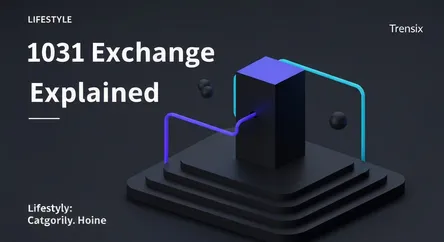Lifestyle
1031 Exchange Explained

Discover the 1031 Exchange, a powerful tax-deferral strategy for real estate investors to swap properties and delay paying capital gains taxes.
What is it?
A 1031 Exchange, named after Section 1031 of the U.S. Internal Revenue Code, is a tax-deferral strategy for real estate investors. It allows an investor to sell an investment property and reinvest the proceeds into a new, "like-kind" property while deferring capital gains taxes. To qualify, investors must follow strict rules, including identifying a replacement property within 45 days of the sale and closing on the new property within 180 days. This mechanism is exclusively for business or investment properties, not personal residences.
Why is it trending?
With property values appreciating significantly, investors face larger capital gains upon selling. The 1031 Exchange is trending as a crucial tool to preserve capital that would otherwise be lost to taxes. It enables investors to grow their portfolios more aggressively by rolling over their entire proceeds into larger or better-performing assets. Discussions around potential changes to tax laws have also heightened awareness, encouraging investors to leverage this strategy while it remains in its current form.
How does it affect people?
For real estate investors, a 1031 Exchange can be transformative. It allows for the continuous growth of wealth by deferring significant tax liabilities, enabling them to upgrade properties, diversify locations, or shift investment strategies without a tax penalty. This can accelerate the journey to financial goals. However, the process is complex and unforgiving. A misstep in the strict timelines or rules can disqualify the exchange, triggering a substantial and often unexpected tax bill. This makes it essential for individuals to work with qualified intermediaries and financial advisors.